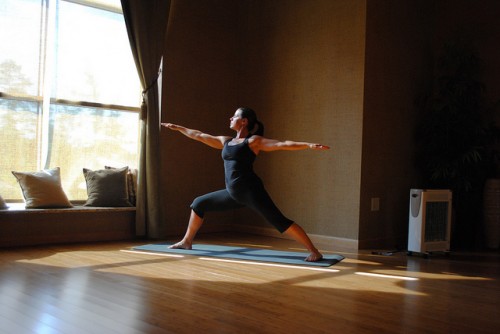Fifty pairs of eyes plead with me as I tell them, “Five more breaths.”
I briefly channel Sookie Stackhouse, imaging the student’s collective inner thought that they have already been in the pose for 20. “Why the bleep are we holding Warrior II for so long?”
Yogis are brave spiritual soldiers. For 90 minutes a class, asana practitioners choose to go into the uncomfortable. They breathe through discomfort and challenging holds, not to get a nicer butt (although this is definitely a by-product!), but to observe the quality of the mind when it is confronted.
Standing asanas include Warriors I through III, Trikonasana (triangle) and Crescent pose, to name a few. They are safe and accessible. Almost every type of practitioner from beginner to advanced, elderly to child can do them.
Unless wildly misaligned, they can be held for long periods because the risk of injury is relatively low. They are also grounding. A standing pose by definition means that we are on our feet and in our legs. In turn, they provide practitioners a sense of stability.
On an even deeper level, standing postures build confidence.
Psychological studies show that when one stands tall and takes up space, like outstretching the arms in Warrior II, levels of the stress hormone cortisol lower. Long holds in standing poses are opportunities to practice inner equanimity no matter the external circumstance. It is amazing that making a shape with the body can actually teach someone how to be a more self-assured and calm person.
Yet in order for these powerful effects to take place, a pose must be held for some time. Flowing through poses is fun and has its benefits, but because of the dynamic nature, there is no stillness and therefore no opportunity to sit in and experience what is happening.
When we pause we can observe our reactions. It is hard to catch ourselves when we are already onto the next thing.
Life is constantly moving, the hamster wheel ever turning. Our practice is the time to stop and the standing poses are the section of class where we can do that. So the next time the teacher holds you in Warrior II and you think to yourself, “Why the bleep am I still in this pose?”—stand back, relax and breathe into the experience.
You will be taking a vinyasa before you know it.
Love elephant and want to go steady?
Sign up for our (curated) daily and weekly newsletters!
Editor: Emily Bartran
Photo: Flickr












Read 1 comment and reply